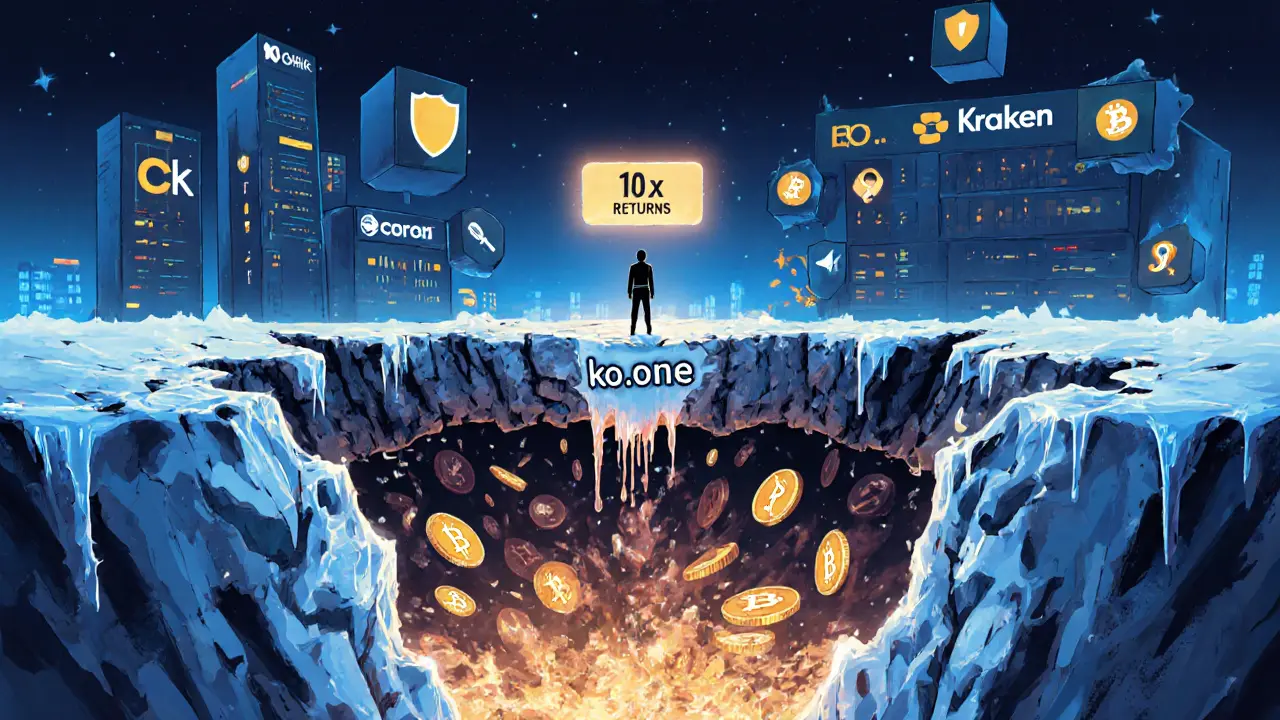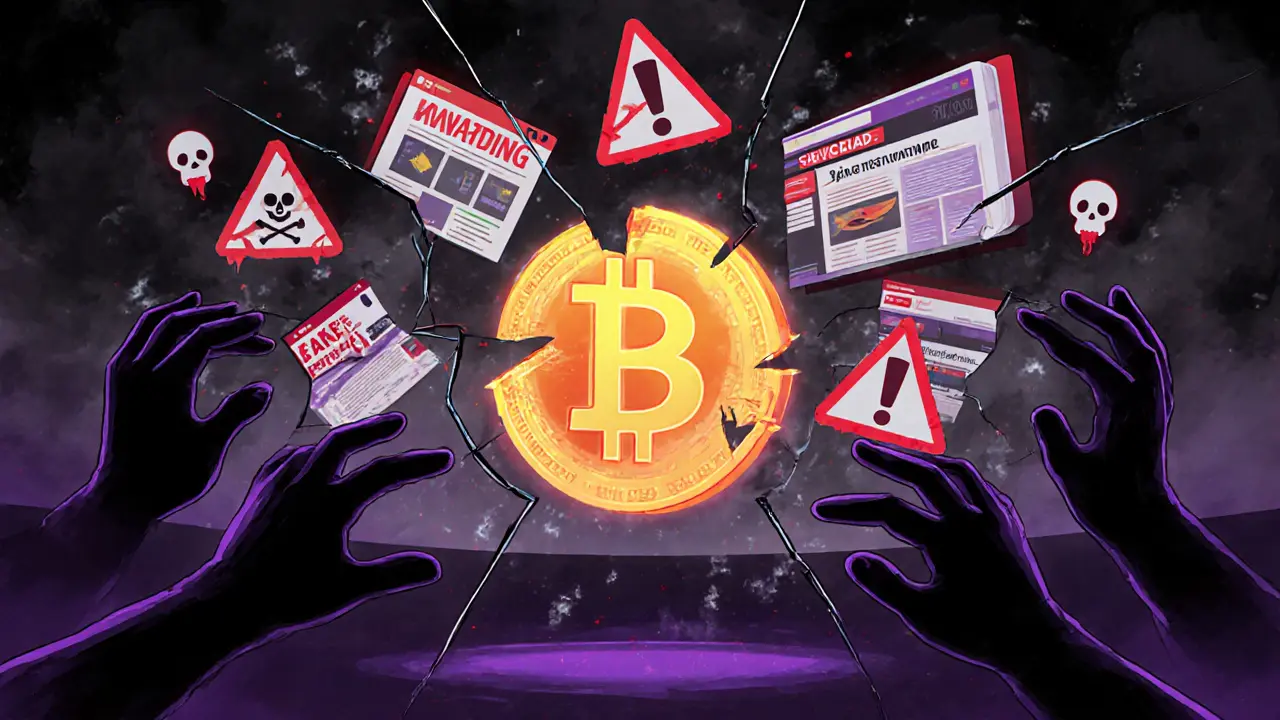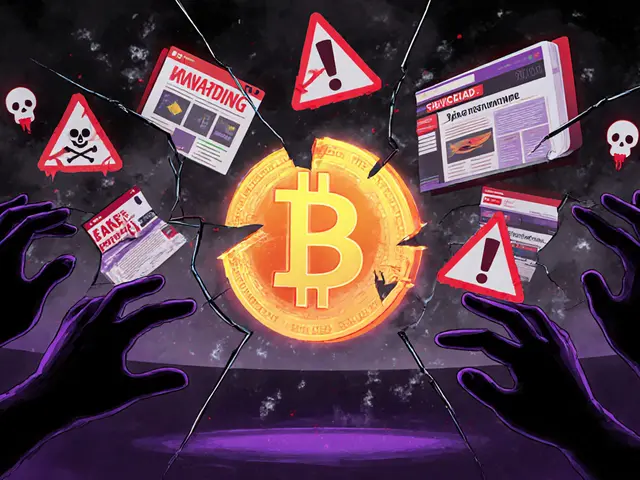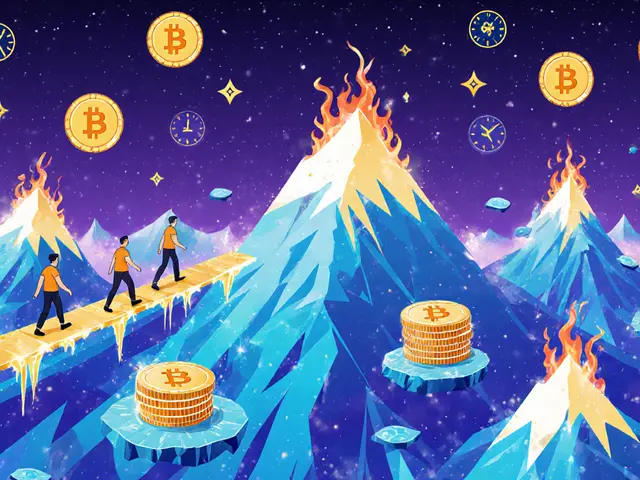Crypto Exchange Verification Checker
Check Exchange Legitimacy
There’s no verified information about a crypto exchange called ko.one. Not in official regulatory databases. Not on trusted review sites like CoinMarketCap, CoinGecko, or Trustpilot. Not even in South Korean financial records, despite the .one domain often being used by Korean-based platforms. If you’ve seen ads, pop-ups, or social media posts pushing ko.one as a new trading hub, you’re being targeted by something that doesn’t meet basic industry standards.
Why You Can’t Find Anything About ko.one
Legitimate crypto exchanges don’t disappear from public records. They publish their licenses, security audits, and team details. Binance, Coinbase, Kraken, and even smaller regional platforms like Coinone or Upbit all have clear digital footprints. They’re mentioned in news articles, regulatory filings, and user forums. ko.one isn’t. Zero credible sources mention it. Not a single review from real users. No press releases. No regulatory disclosures. That’s not just quiet-it’s suspicious.What a Real Crypto Exchange Should Have
If you’re considering any crypto platform, here’s what you should demand-and what ko.one clearly doesn’t offer:- Two-Factor Authentication (2FA): Not just SMS. FIDO2 or TOTP-based 2FA is the minimum. Without it, your account is one phishing email away from being drained.
- Cold Storage: Over 95% of user funds should be stored offline. If an exchange keeps most assets online, it’s asking for trouble. The 2024 DMM Bitcoin hack, which lost $305 million in Bitcoin, happened because the exchange didn’t properly isolate cold wallets.
- Public Security Audits: Reputable exchanges hire firms like CertiK, SlowMist, or Hacken to audit their code. These reports are published. ko.one has none.
- Regulatory Compliance: Exchanges in the U.S., EU, Japan, and South Korea must register with financial authorities. They follow KYC and AML rules. No country’s financial regulator lists ko.one as licensed.
- Transparent Fee Structure: Real exchanges list trading, deposit, and withdrawal fees clearly. No hidden charges. ko.one’s site, if it even loads, doesn’t show this.
How Scams Like ko.one Operate
These fake exchanges follow a pattern:- They create a sleek-looking website with fake testimonials and stock images of smiling traders.
- They use aggressive ads on TikTok, YouTube, and Telegram promising 10x returns or "exclusive access."
- They lure users into depositing crypto-usually Bitcoin or USDT.
- Once funds are in, withdrawals are blocked under fake reasons: "mandatory KYC verification," "account freeze for security," or "insufficient liquidity."
- Within days or weeks, the site vanishes. Domain expires. Social media accounts go silent.

Real Alternatives You Can Trust
If you want to trade crypto safely, here are real platforms with proven track records:| Exchange | Region | Security Features | Regulated? | Supported Coins |
|---|---|---|---|---|
| Coinbase | USA | FIDO2 2FA, cold storage, bug bounty | Yes (FinCEN, NYDFS) | 200+ |
| Kraken | USA | IP whitelisting, withdrawal delays, audit reports | Yes (FinCEN, ASIC) | 250+ |
| Coinone | South Korea | CertiK audits, Xangle transparency | Yes (FSC, FTC) | 50+ |
| Binance | Global (regulated entities) | Multi-sig wallets, SBA, insurance fund | Partially (Japan, UAE, EU) | 500+ |
Coinone, for example, was raided by South Korean tax authorities in 2018-but it survived because it later complied with regulations. It now works with CertiK to audit its smart contracts and Xangle to verify project legitimacy. That’s accountability. ko.one has none.
Red Flags That Should Make You Run
Here’s what to watch for:- No contact email or physical address
- Website built on a free platform like Wix or WordPress (not custom-coded)
- Only accepts crypto deposits-no fiat on-ramps
- Claims to be "the next Binance" or "unregulated for higher returns"
- Pressures you to deposit quickly with fake countdown timers
If you’ve already sent crypto to ko.one, act fast. Report it to your local financial crime unit. File a complaint with IC3 (Internet Crime Complaint Center) in the U.S. or Action Fraud in the UK. Recovery is unlikely, but documenting the fraud helps authorities track patterns.
How to Protect Yourself
Don’t let this be your lesson. Use these steps before trading anywhere:- Search the exchange name + "scam" or "review" on Google and Reddit.
- Check if it’s listed on CoinMarketCap or CoinGecko. If not, it’s not real.
- Look for a license number. Verify it on the regulator’s official website (e.g., FCA, SEC, FSC).
- Read user comments on Trustpilot and Reddit-not the testimonials on the site itself.
- Start small. Deposit $10 first. If you can’t withdraw it, walk away.
There’s no shortcut to safe crypto trading. The platforms that last are the ones that play by the rules. ko.one doesn’t even pretend to.
Is ko.one a real crypto exchange?
No, ko.one is not a real or verified crypto exchange. There are no official records, regulatory licenses, security audits, or credible user reviews for this platform. It does not appear on any major crypto data sites like CoinMarketCap or CoinGecko, and no financial authority recognizes it.
Can I withdraw my crypto from ko.one?
If you’ve deposited crypto into ko.one, you likely won’t be able to withdraw it. Fake exchanges often block withdrawals under false pretenses like "KYC verification" or "account review." Once funds are in, the platform typically disappears. Treat any deposit to ko.one as lost.
Why do people promote ko.one on social media?
Scammers use social media to target new crypto users with fake promises of high returns. They pay influencers or use bots to post misleading content. These posts are designed to create urgency and trust using stock photos and fabricated testimonials. Always verify platforms independently-never trust ads.
What should I do if I sent crypto to ko.one?
Immediately stop all communication with the platform. Report the incident to your local financial crime unit and file a complaint with IC3 (in the U.S.) or Action Fraud (in the UK). Change passwords on all related accounts and enable 2FA. While recovery is rare, reporting helps authorities track scam networks.
Are there any safe alternatives to ko.one?
Yes. Use well-established exchanges like Coinbase, Kraken, or Coinone. These platforms are regulated, publish security audits, and have been operating for years. Always start with a small deposit to test withdrawals before committing more funds.






Rachel Thomas
November 27, 2025 AT 22:41So let me get this straight-some sketchy website with a .one domain is somehow worse than FTX? Bro, FTX had a whole building, a CEO on TV, and a sponsorship deal with the NBA. This ko.one thing is just a WordPress page with stock photos. If you’re scared of this, you shouldn’t be trading at all. You’re literally scared of a ghost. The real scam is believing you need a ‘regulated’ exchange to make money. I’ve lost more money to Coinbase’s withdrawal delays than I ever would’ve to a fake site.